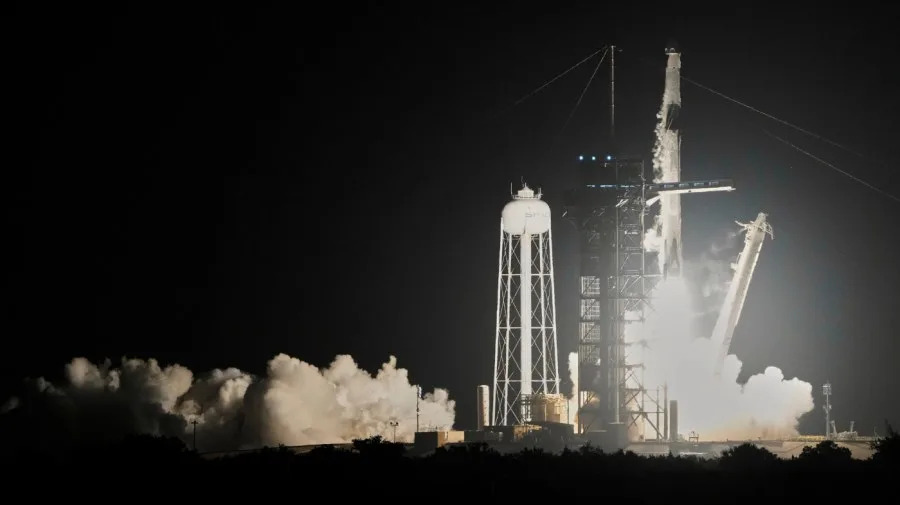
Recently, President Trump issued an executive order entitled “Enabling Competition in the Commercial Space Industry.” Its text suggests that the real title should be “Making commercial space great again.”
Ars Technica has a good rundown about what the executive order is intended to do. It is intended to accomplish three things.
First, it instructs Secretary of Transportation Sean Duffy, who happens to also be the interim NASA administrator, to streamline or even eliminate environmental and other regulations related to space launches. The idea is to accelerate launch license approval.
The provision is of particular interest to Elon Musk’s SpaceX. The company has been busy developing its Starship rocket by testing it, noting how the test failed, using the failure to enhance the rocket for the next test, and repeating.
Unfortunately, government regulations have compelled the Federal Aviation Administration to conduct exhaustive accident investigations that have taken weeks, even months, before SpaceX is allowed to fly again.
The situation has been a source of constant frustration, especially since the Human Landing System version of Starship is crucial for returning astronauts to the lunar surface before the Chinese get there.
Next, the executive order will eliminate duplicative reviews for spaceport development. It will also limit state regulators’ ability to enforce rules concerning the operation of space ports —particularly relevant for the California Coastal Commission’s efforts to interfere with SpaceX operations at Vandenburg Space Force Base.
Finally, it will give the Commerce Department authority to oversee what is referred to as “novel space activities.” These activities can be everything from asteroid mining to space-based manufacturing.
The executive order should expand the number and cadence of space launches in the United States, creating wealth and jobs as well as lowering costs for both government and private customers. Important to an administration whose slogan is “America first,” the order should make American space launch providers more attractive than foreign providers.
As beneficial as the executive order is, it does have its critics.
The environmental lobby is especially irate. Jared Margolis, a senior attorney for the Center for Biological Diversity, issued a statement to Ars Technica, saying the “reckless order puts people and wildlife at risk from private companies launching giant rockets that often explode and wreak devastation on surrounding areas.”
A piece in Gizmodo noted that environmental groups have sued the FAA previously when the SpaceX super heavy rocket Starship suffered a mishap that damaged a surrounding wildlife habitat, claiming the regulatory agency’s oversight of commercial space launches was inadequate. Even so, SpaceX fixed the specific problem in that case, which has not since recurred.
The easiest way to protect the surrounding environment at the SpaceX launch facility at Starbase would be to shut it down and not launch anymore. Since that is not an option if the U.S. is to remain a space power, a balance has to be found between developing the SpaceX Starship and protecting the environment. The Trump executive order is an attempt to do just that.
Unfortunately, after the executive order is fully implemented, the environmental groups who have been incensed at giant rockets being tested are not going to accept things as they are. They are going to run to the courts.
Injunctions, appeals, and appeals of the appeals, will follow as night follows day. Once again, months will be added between tests of launch vehicles like the Starship as litigation proceeds apace, grinding its way slowly through the court system.
Congress can step in by passing legislation that codifies the need to balance the requirements for a vibrant space launch industry and protection of the environment.
The Kennedy Space Center is next to the Merritt Island National Wildlife Refuge. Yet NASA was able to launch men from it to the moon, operate the space shuttle, serve as a commercial spaceport and preserve that refuge without jumping through legal and regulatory hoops. Commercial space ports like SpaceX’s Star Base can do likewise if allowed to.
Had the kind of environmental litigation that has bedeviled the development of SpaceX’s Starship existed in the 1960s, NASA would not have beaten the Soviets to the moon. If things are allowed to continue as they are, we may not beat the Chinese back to the moon, with all that implies — which Eric Berger at Ars Technica now thinks is likely.
Mark R. Whittington, who writes frequently about space policy, has published a political study of space exploration entitled “Why is It So Hard to Go Back to the Moon?” as well as “The Moon, Mars and Beyond” and, most recently, “Why is America Going Back to the Moon?” He blogs at Curmudgeons Corner.
Copyright 2025 Nexstar Media, Inc. All rights reserved. This material may not be published, broadcast, rewritten, or redistributed.
For the latest news, weather, sports, and streaming video, head to The Hill.






Comments